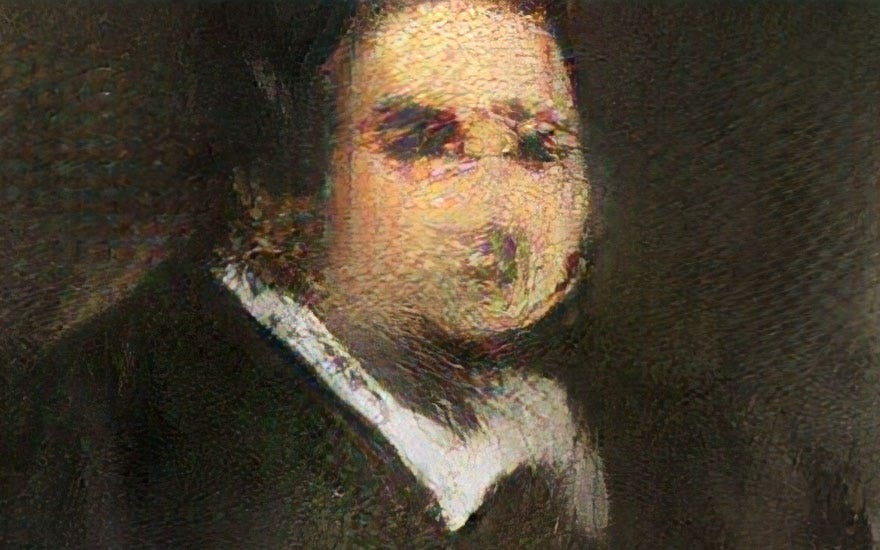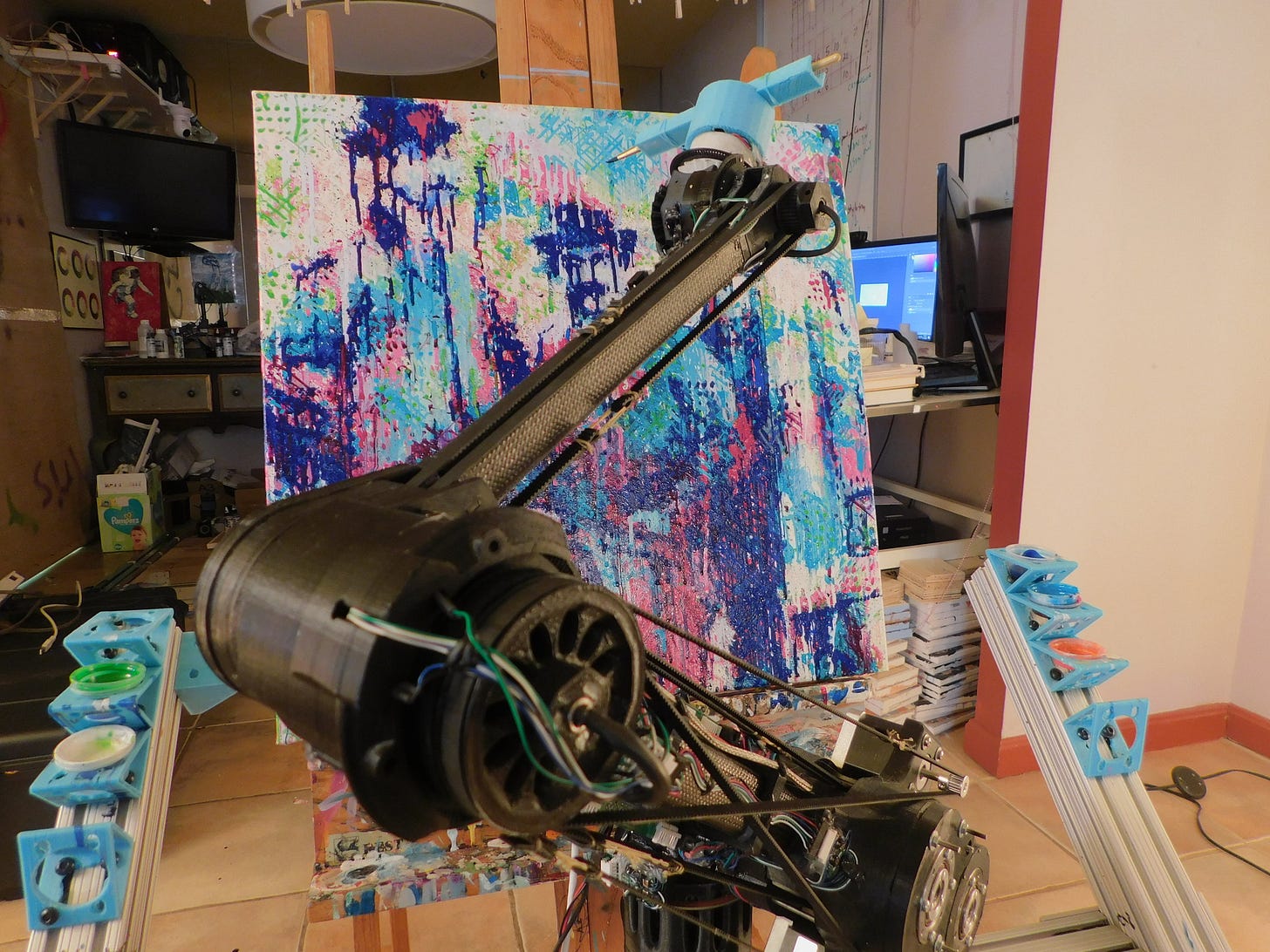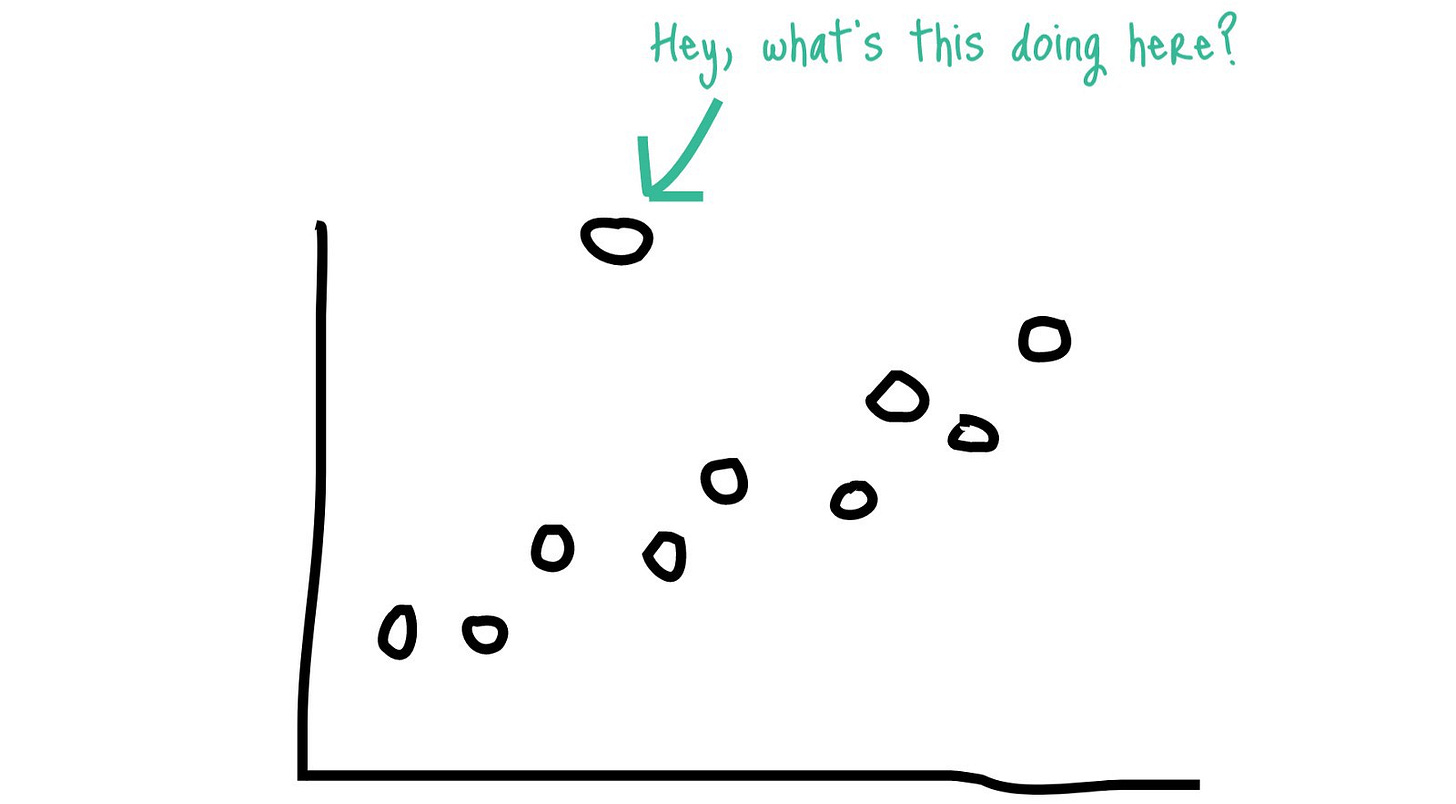Hey there,
It’s Mikal Khoso and welcome to Trajectory, a newsletter about where the world is heading, delivered straight to your inbox.
This week’s key issue is the question of whether AI is capable of creativity. I’ve been thinking about the limits of what machine learning and AI are capable of for a while and creativity is one thing that may be beyond their reach. While we have AI-created music and art and more, the question remains on whether this is really creativity at all. Creativity is an act of creating something new that pushes boundaries but also an act of communicating a specific message. Or, according to the dictionary definition creativity is “the use of the imagination or original ideas, especially in the production of an artistic work.” Are machines capable of both of these? This week we’ll unpack the question of artificial creativity in more detail.
Questions, comments and feedback are always welcome.
Have a great week,
Mikal
PS: If you liked this week’s edition and think someone else you know would find it interesting please take a couple seconds to share it via email or on social media…..and if you haven’t signed up, please do! 🙏
Intellectual Sparks
Social physics: Despite the vagaries of free will and circumstance, human behaviour in bulk is far more predictable than we like to imagine
We’re in a geopolitical recession. Trump isn’t the cause, he’s a symptom: Ian Bremmer, President of Eurasia Group, details our decisive shift from internationl multi-lateral institutions to a more multi-polar world
Why Silicon Valley Should Fear Europe's Competition Chief: The antitrust hammer is going to drop in Europe and US on the tech industry in the coming years. Find out who’s leading the charge in Europe.
Globalisation is dead and we need to invent a new world order: A book excerpt and author interview from the recently published “The Levelling”
JP Morgan has created an index to track the effect of Trump’s tweets on financial markets: Pretty cool index from JP Morgan.
Key Issue: Can AI Create?
In recent years artificial intelligence and machine learning technologies have developed at breakneck speed. Today you find them across the economy doing everything from underwriting risk for new loans to language translation and helping diagnose cancer. Not only can machine learning systems do these tasks successfully, they usually do them orders of magnitude better than humans. When Google’s AlphaGo system beat the world champion Lee Sedol at Go - a notoriously difficult Eastern Asian game – it seemed like a tipping point had been reached and the floodgates for AI advancement were about to open.
At face value it looks like the possible applications of machine learning and AI are endless and that it is only a matter of time before someone builds a machine learning system capable of doing a given task previously done by a human significantly better than a human. But there might be one area where that may never happen: creativity.
Creativity is often used by defenders of human ingenuity as an example of something beyond the reach of machine learning systems. At its core creativity is about creating something novel and original that hasn’t existed before and communicating something in that process. Humans, the argument goes, are the only beings capable of creating something new that hasn’t been thought of or seen before while machines are simply generalizing from past data.
But there is a growing number of examples that show that creativity is not unique to human beings and that Artificial Creativity is on the cusp of developing into a larger area of focus and study in business and academia. Remarkably, in October of 2018 at the famous auction house Christie’s, a piece of artwork generated by AI sold for a staggering $432,000 – nearly 45 times higher than its estimated selling price prior to the auction (you can see the painting below).

The portrait above was created by Obvious Art, a Paris-based collective exploring the intersection of art and artificial intelligence. Amusingly, the author name listed alongside the painting during the auction was:

The painting above, in all its complexity and colors and in all its depth and hues was the result of this relatively short algorithm. This auction is not a one-off example of algorithms creating art but instead is part of a wider trend. Machine learning has even been united with robotics to create the CloudPainter – an artificially intelligent painting robot with some pretty neat art.

But the question of whether machine learning systems are actually creating anything novel and new or are simply generalizing from past data is the key question here. Machine learning systems are designed to find patterns in data and generalize from them, which often is highly useful in business contexts with a lot of data. Creating a machine learning system involves training the algorithm on a dataset to finetune its accuracy. ML engineers are always worried about overfitting their algorithm – training it to fit so well to the patterns of a particular dataset that it fails to generalize when provided new data.

Even some of the most advanced forms of machine learning – generative adversarial networks (GANs) – follow this same premise of fitting to and generalizing from a dataset. GANs are composed of two neural networks – a generator network and a discriminator network. The generator network will generate something artificially like a sound, image, video or so on and the discriminator will attempt to judge whether what is generated is real or artificially created. But still in this case both of the neural networks are trained on historical datasets to finetune their algorithms.
AI is excellent at mimicking things it is trained on and replicating them – even paintings or songs. But true creativity involves creating something that hasn’t been seen before, that is radical and original and pushes the boundaries of our thinking. Such creativity is an outlier by nature and machine learning systems trained to fit data in a certain way aren’t designed to fit to outliers (As a reminder, an outlier is an observation that appears far away and diverges from an overall pattern in a sample). In fact outliers are often stripped from datasets before a machine learning model is trained on it.

Therefore, if one accepts the argument that true creativity, the kind that is widely admired and deeply impactful, is by nature an outlier, then machine learning systems are simply not able to be creative in this kind of way. Instead, they can only mimic and replicate things they’ve been trained on in the past. Feed a machine learning systems 1000 examples of French 16th century portraits and it will do a damn good job of creating a portrait that shares the aesthetics of the data it was trained on. But the very same system won’t be able to create a mid-20th century abstract expressionist painting in the style of Jackson Pollock. It’s simply not possible. While you could train another machine learning system to create mid-20th century abstract expressionist paintings, part of the argument for those defending humans is that humans display a dexterity in our creativity that machines can’t. We switch between ideas quickly, combine and recombine styles and concepts and have random flashes of inspiration, all of which can lead to creating something completely new and never seen before.
It is true that human creativity doesn’t occur in a vacuum. Our creatives learn their aesthetic sensibilities and are inspired by the creatives and creative works that came before them, similar to the way machine learning systems are trained on past data. At the end of the day the answer to whether machines are capable of creativity simply comes down to our definition of creativity and the conditions we put on a creative piece and a creator to earn that distinction. But if we hold originality and novelty to be conditions of creativity, characteristics that share similar qualities to outliers, then artificial creativity is not possible, only artificial mimicry.
It’s clear that humans and machines come at creativity in totally different ways. The inner workings that lead to a creative piece are fundamentally different and it looks like machines are only capable of mimicry. But perhaps it doesn’t matter at all that machine learning systems mimic that which comes before them. After all, the great artist Pablo Picasso famously remarked: Good artists copy; great artists steal.


